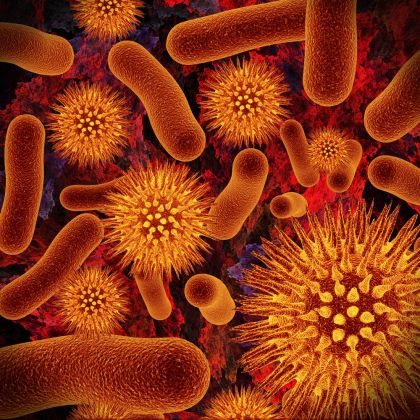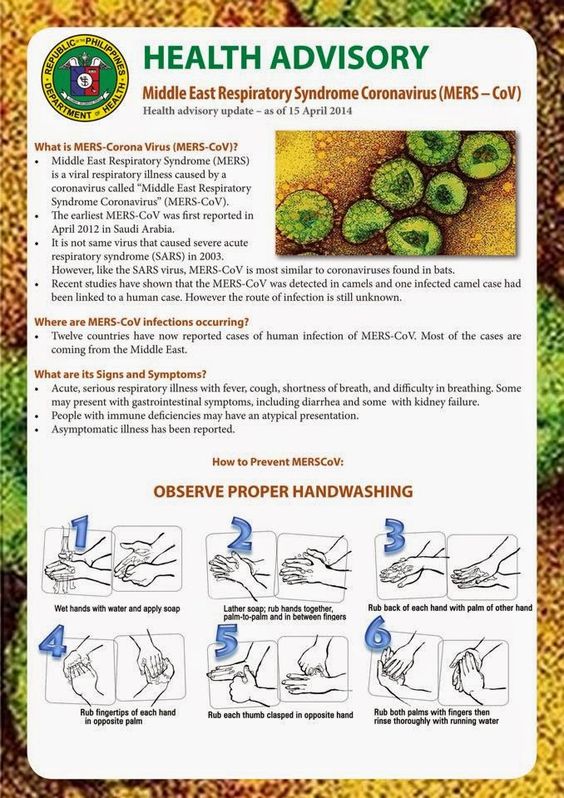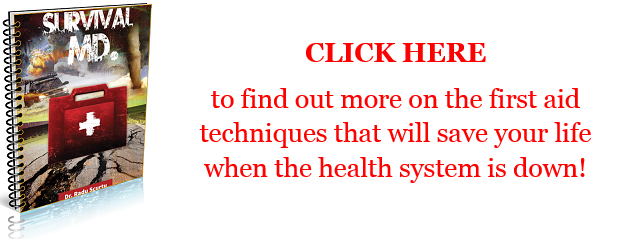The recent report of the first victim of the Chinese coronavirus, here in the United States, has sparked concern about a potential pandemic affecting us here at home.
The deadly virus has already claimed the lives of 18 victims and there are over 600 confirmed cases worldwide. While the vast majority of those cases are in the city of Wuhan, China, the virus has spread to other parts of China, as well as Japan, South Korea, Taiwan, Thailand and now the U.S.
The Chinese government is taking action to stop the spread of the virus, banning travel from the seven cities which have seen the worst outbreaks, including Wuhan, the birthplace of the pandemic. Likewise, the US government is taking the pandemic seriously, limiting international flights from the potentially infected areas of China to five U.S. airports. The Center for Disease Control and Prevention (CDC) has sent 100 workers to these airports to set up screening centers for incoming passengers.
The one case that has shown up in the United States is a man who recently returned from China, where he obviously contracted the disease. Experiencing flu-like symptoms on his return, he went to his family doctor, who had him admitted to the hospital.
At this point, we don’t know if he managed to infect anyone else, before being hospitalized. Typically, a patient is contagious before the onset of frank symptoms. In the case of the flu, for example, people are typically contagious for two days, before there are any obvious symptoms. With an incubation period of anywhere from two to ten days, it is hard to say how many potential victims he had contact with, before recognizing he was ill.
The real question for us is: how seriously should you and I be taking this? Is this potentially as bad as the Ebola pandemic of 2014? How much risk do we face and what precautions should we make?
Let’s Get This Straight
When we hear the word “pandemic” we tend to think of things like the Black Plague, the worst in history, which killed off 60 percent of the European population in the 14th century. But by definition, a pandemic is a “regional” epidemic. In other words, it’s an epidemic that hits several neighboring countries in the same region of the world.
Perhaps it’s time for that definition to change. With modern air travel being so prevalent, any epidemic can easily spread to other countries; and it’s not limited to spreading to neighboring countries either. As we’ve seen in this case, pandemics can quickly make it around the world, carried by those who have been infected. They, in turn, become the disease’s instrument to infect others.
In a sense, we live with pandemics every year, although they are not commonly referred to as such. The flu, which goes around and around the world, fulfills the definition of a pandemic. However, it’s not normally referred to as such, simply because of the low percentage of victims who die of it.
But what About the Coronavirus?
It’s not widely known, but according to the CDC website[1], the flu accounts for anywhere between 12,000 to 61,000 deaths per year. Most of the time, those deaths are caused by a combination of the flu and some other disease; either a pre-existing respiratory problem or contracting pneumonia due to the flu. If one has renal problems or is dehydrated and contracts the flu, the chance of dehydration is increased, with the potential of leading to death. The elderly, who often have already weakened immune systems, and the very young seem to be the most susceptible to dying from the flu.
But the percentage of people who die from the flu is actually extremely low. With a potential of 60.8 million cases of flu per year, even the highest death toll recorded by CDC is only one-tenth of one percent of total cases. I’m not being cavalier about that; but one-tenth of one percent is much better than 2.8 percent, which is the current statistic for the coronavirus or 80 percent, which is typical for Ebola.
Like influenza, coronavirus isn’t one single virus, but a family of seven (there are four major strains of flu). A couple of these strains, SARS and MERS are rather serious, much more serious than what’s being experienced in China. Yet, even the more benign version that is spreading today is taking victims.
So far, all of the victims of this epidemic are located in Wuhan, China. They have all been old men. So it’s likely that they had some other underlying condition, which made them especially vulnerable to the disease. It is also likely that it was a combination of that condition and the virus which ended up killing them, not just the coronavirus alone.
Treating Coronavirus
We won’t know the full risk of the current coronavirus outbreak until CDC is able to quantify it and determine its parameters. As of yet, we have very little information about it, let alone about how to kill the virus. Although I have heard rumors of a vaccine, it is way too early to tell if it will work or if it will infect the very same people it is intended to protect.
One thing that most people don’t realize, is that unlike bacterial infections, which can be treated with antibiotics, there are no antiviral drugs that doctors can prescribe. Medical science has had zero success in developing drugs that will combat viral infections.
Part of the reason for this is that there are so many different viruses out there. In addition to that, those are so simple that they mutate easily. In fact, a large part of the reason that viral epidemics burn out is because the viruses mutate through successive generations, reducing their potency to the point where they no longer kill those they infect. But that ability to mutate also makes it hard to develop antiviral drugs that work.
That’s why vaccines are so important. Vaccines are essentially a less virulent form of the virus. As such, they don’t cause the full effects of the disease. Instead, they trigger the body’s immune system, causing it to develop antibodies that kill the virus. Then, if the individual is exposed to the virus, their body’s immune system is already prepared to combat it, protecting them.
Surviving a Pandemic
It is unknown, as of yet, whether the one victim of the coronavirus here in the United States infected anyone else with the virus, before seeing his doctor. It is quite possible that there were several days between the time he returned home and the time that symptoms began. If that’s the case, he could have come into contact with a wide range of people, some of whom could have become infected as well.
I’m sure that the appropriate medical professionals in Washington state are working hard to identify everywhere that the victim went and everyone he came into contact with. Those people will all be screened for the coronavirus, just like people returning to the US from China are. But all it would take is for them to miss one infected person, and the disease could begin spreading through the population. How fast it might spread and how many people might become infected is anyone’s guess at this time.
Should this reach epidemic proportions here in the USA, we will need to take precautions to protect ourselves. If enough people do that, the disease will burn out. But just what sorts of precautions do we need to take?
All viral infections travel from animals to people or from people to people. Variants of the flu, like the swine flu and the bird flu, are named the way they are, because the virus first infected people by passing from those animals to people. But then the virus started passing from one person to the next. This has been shown to be happening with the coronavirus.
But just how does it do that?
Viruses, and other disease-causing pathogens, normally travel from person to person through bodily fluids. The most dangerous of these is called “aerosol” often mistaken for airborne. Truly airborne viruses can travel from one person to the next simply by breathing. Recent studies of the flu virus indicate that it might travel in this manner. Previously, it was thought to only travel through aerosol. That’s bad enough.
Aerosol refers to tiny droplets of saliva and mucus which leave the body when one coughs or sneezes. These can travel several feet and be breathed in by other people. They can also deposit on common surfaces, where others can get them on their hands. The virus then enters the body through the eyes or mouth, when the person rubs their eyes or eats with their hands.
As part of our natural defenses against sickness, our skin does an amazingly good job of keeping out viruses and other microscopic pathogens. The only way they can get through the skin is through a natural opening, like those I just mentioned or through a cut or contusion in the skin.
Once inside, the viruses multiply, until they reach the point where they cause illness to appear in the person’s body.
Isolation
The easiest way to avoid infection is to avoid contact with other people. In Tom Clancy’s book, “Executive Orders,” the President institutes a nationwide quarantine and closing of all public places of congregation, to stop a case of bio-warfare, where the Ebola virus had been released on the public. The fear generated by that order reduced human interaction to the point where the epidemic died out.
While it might be impractical to cut off interaction with others altogether, a serious enough epidemic could make that necessary. Had the people of Europe known about the spread of disease and instituted such a quarantine, the Black Death wouldn’t have claimed so many victims.
Even without a quarantine, it is possible to greatly reduce the risk of infection by the simple expedient of reducing contact with other people. If you are isolated from others, they can’t spread disease to you. The risk associated with contact you must have can be mitigated by keeping enough distance between them and yourself, so that virus particles cannot travel from them to you via aerosol.
Low-Risk Protection
If you do have to have contact with others in the midst of an epidemic, it only makes sense to take some basic precautions. Here we can learn from the medical community and what they do. The basic precautions they take are enough to protect them from almost any virus or bacteria.
What precautions am I talking about? Wearing medical masks to protect the nose and mouth from aerosol, rubber gloves on their hands and in some cases, going so far as to wear goggles, to protect the eyes from the aerosol as well. They do this whenever they are with patients who are infected or who have a disease. Then when they leave those patients, they remove their gloves and wash their hands.
High-Risk Protection
For really severe diseases, like Ebola or Lass Fever, the medical community will step their precautions up a bit, wearing airtight suits that keep everything out. The standard is the Racal suit, which comes with a helmet and an air handling system that cleans the air coming into the suit.
Unfortunately, the Racal suit is expensive, more than a thousand dollars. But we can make an effective substitute out of much lower cost items. People doing hazard materials cleanup wear a Tyvek suit, which is a fibrous plastic, hoods, and booties to go over the shoes that exist as well. One of these suits, with rubber gloves and a hood, will cover most of your body, especially if you tape the sleeve and pant cuffs to the gloves and booties. It’s also a good idea to put on a second pair of gloves so that they can be removed if they become contaminated, without having to expose the hands to the air. For the face, wear a gas mask, which will filter out the air, while protecting the openings in your skin.
When wearing a suit of this sort for protection, you have to assume that the suit will become contaminated. Therefore, you need a decontamination area outside your home, like on the back patio. Before taking the suit off, the suit would need to be sprayed down with an antiseptic solution, then rinsed. Then it could be taken off and the individual could safely enter the house.
If you want to go one step farther for extreme protection, build an airlock out of sheet plastic, just inside the door. Place ultraviolet lights in this airlock, in such a way that the light will cover the entire body of someone standing in there. Ultraviolet is uniformly fatal to viruses, so standing in there for a minute, ensuring that the light hits every part of the body, is a good second stage of decontamination. The problem is, we’re dealing with things that are too small to see. You and your clothes or your Tyvek suit can look perfectly clean, but be covered with bacteria or viruses. Since we have no safe way of telling if they are there, we must assume the worst and decontaminate thoroughly. That’s the only way to be sure and be safe
Resources
[1] www.cdc.gov/flu/about/burden/index.htm













Martin L Hedington | January 29, 2020
|
Yeah, about that; “tiny droplets of saliva and mucus which leave the body when one coughs or sneezes. These can travel several feet and be breathed in by other people. ”
Ahem, try more like 6 to 8 meters.
Nice articles BTW, very useful for a lot of reasons. Warm greetings from South Africa.
Hal Dey | February 1, 2020
|
I applaude you for not being inflamatory about the dangers of the virus. It is indeed necessary to be becautious, but not to the extent of being overly concerned. It is a health danger to be sure, but not one that demands that everyone in the US should stay home and wear breathing masks. Normal common sense should prevail.
TruthB Told | February 18, 2020
|
There is a real problem that is looming in China that did not happen in 2003 (the SARS outbreak). They have quarantined 15 cities (over 50 million) so far. They are starting to see the economic impact. Factories are closed, food delivery systems ( trucks, trains and automobiles) have stopped. They are ordering people to go back to work. This will insure the outbreak continues. What does that mean to us? We still get most of our stuff from China (we haven’t cut the umbilical cord yet). China provides the world wit a lot f “stuff”. Remember it is the 2nd largest economy after us.If they don’t provide the “stuff’ , then they probably provide the “stuff’ it’s made of. The economic phrase is “When China sneezes, the rest of the world get’s the flu.” The “economic flu” has yet to hit.